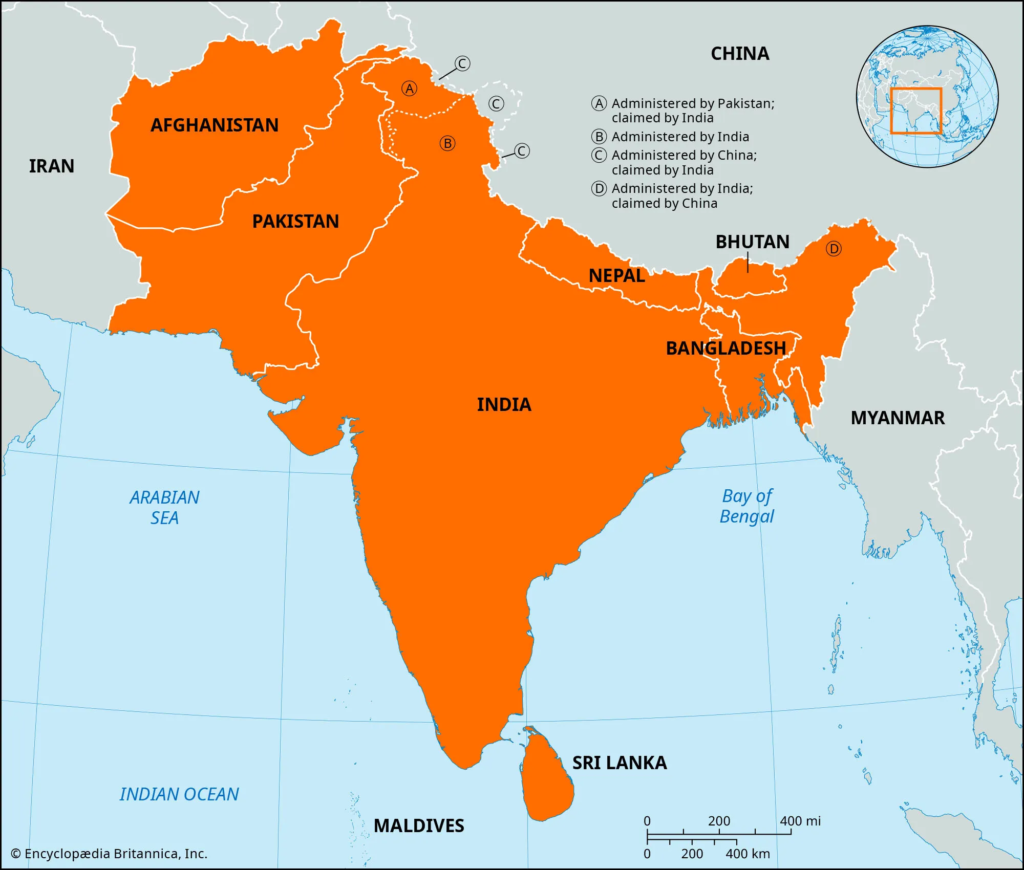
South Asia is popularly understood purely in terms of geopolitical boundaries. Following this idea “South Asia” is usually described as the southern region of Asia comprising the countries of Afghanistan, Bangladesh, Bhutan, India, Maldives, Nepal, Pakistan, and Sri Lanka. However, the question is whether it is adequate for us to understand “South Asia” purely in terms of its morphology or if it is necessary to look beyond these rigid nation-state boundaries. As Sociology students, we are often warned against limiting our scope of understanding of phenomena to a singular social reality; I would like to apply this idea to South Asia, exploring it from a diverse perspective of being an entity to meaning different things to different people.
South Asia cannot be limited or reduced to a single uniform idea. For example, the bearings of South Asia for a refugee might be very different from a person holding political power in the region. Any universality may result in the exclusion of experiences. Enforcing a singular identity to people of South Asia is a disastrous practice of not only homogenising a diverse region but also refuting the struggles of others. Just like an entity, South Asia has adopted an anthropomorphic characteristic. Simply put, it has a life of its own; it thrives on its diversity, culture, and dynamism, changing over time. Assigning a static discourse implies a colonial understanding of South Asia, which itself is ethnocentric.
We have witnessed the failures of regional political organisations like SAARC which promised integration of peace and prosperity amongst countries of South Asia. Such political organisations restrict the idea of South Asia to merely boundaries of Nation State, but as an anthropomorphic entity can South Asia be confined to its geopolitical boundaries? I would like to further elaborate on the term‘digressive’. It implies moving across boundaries without structure. The very term digressive points to the diversity of South Asia. A digressive image is not static, it is not limiting or rigid, and it offers freedom to be or not to be. Then comes the most debatable issue with digressive images: their subjectivity. Digressive images of South Asia are laced with subjectivity which I feel is its biggest strength. Some might see it as its weakness, some might feel that the subjectivity may bring in unimaginable conflicting views which often threaten people. The question to really ask here is why are we threatened by the diversity of this multitude? Can it be because of our conformity to an ideology or our urge to establish a cause-and-effect relationship? Or could it be our informed understanding of discourse of nation-states?
In 2016, the magazine Himal Southasian produced an interesting take on the map of South Asia. They inverted the map of South Asia and named it ‘the right-side-up-map’ of South Asia. The inverted map sparked debate amongst people viewing this act almost as anti nationalist. This leads to the questions such as – What is the right side of a map? And do geographical positions come with certain advantages This brings out a very crucial point of reference, i.e. rigidity and obsession with maps and also perceiving South Asia from a purely a nation state point of view. This very obsession dismisses the shared history and the layers of complexity of South Asia. It limits South Asian understanding in terms of boundaries of the nation state and regionalism rather than understanding the shared cultural beliefs, practices and experiences of the people across the region.
My take would be to come up with a cumulative image. For me, the geopolitical attribution acts as a point of departure (which obviously cannot be dismissed) to the much larger picture that is South Asia. South Asia is different yet so similar. We are conjoined with the same colonial history and the same colonial orientalism which has haunted us over the years. There is a need to decolonize and depart from this ideology, there is a need to acknowledge our shared past and celebrate our culture. The fragmentation of South Asia is highly complex but can the total of parts be made into a whole? Lastly, I would like to emphasize that the idea of South Asia, including mine, is not a finished product, it is a mobile thought scape of different elements coming together to form an idea. The way it concerns a sociologist is through discussion, deliberation, and engagement with different subjective ideas of South Asia and coming across the one you find fit.
Prakriti Kandwal is a postgraduate student of Sociology at the School of Liberal Studies, Dr B R Ambedkar University Delhi. This article captures the diverse ideas associated with South Asia and the constraints of geopolitical nation-state ideologies. The article urges readers to consider the multiplicity associated with ‘South Asia’ and be mindful of the ideas across different ideologies
